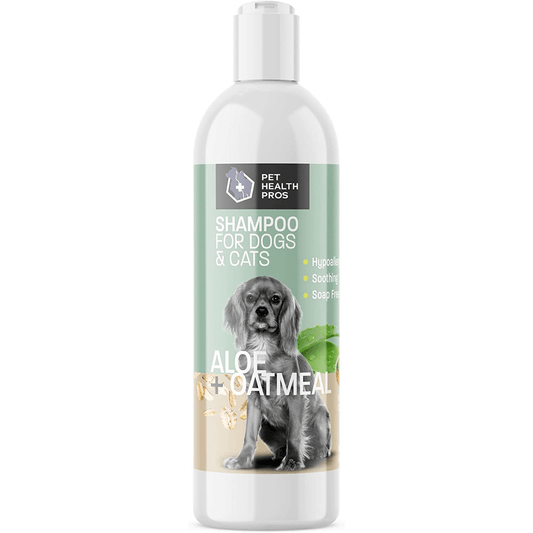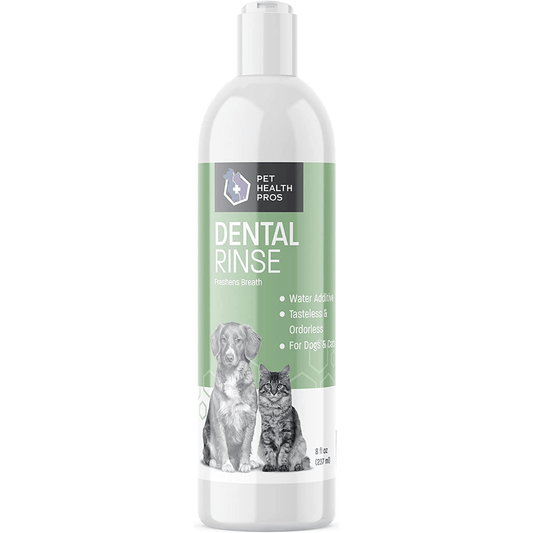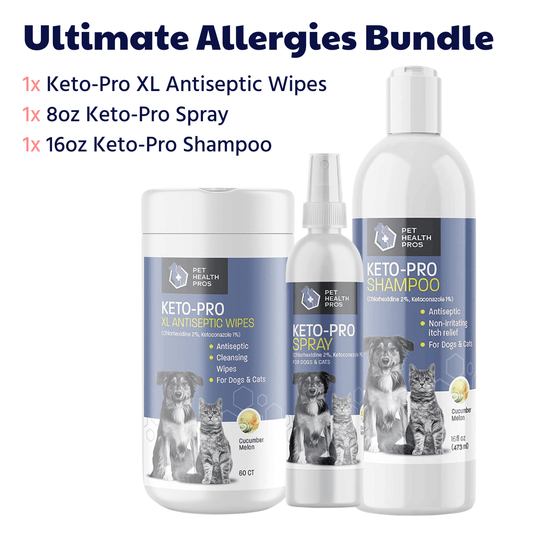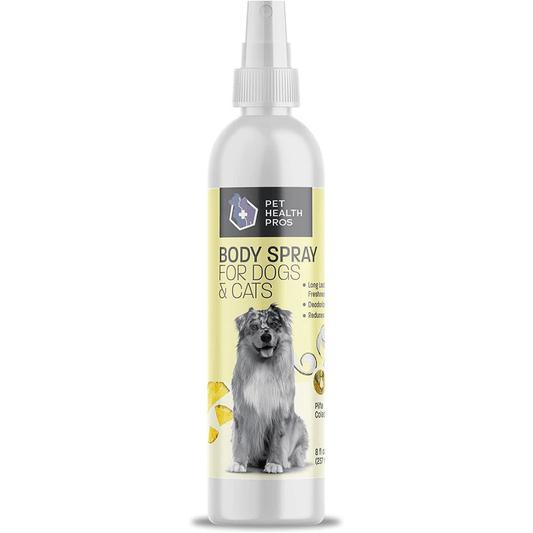If you've noticed your dog licking or chewing at their paws more than usual, it might be a sign of a yeast infection. Yeast infections on dogs' paws can be uncomfortable for your furry friend and often require a bit of attention to treat effectively. This guide will walk you through understanding, identifying, and treating yeast infections on your dog's paws, so you can help your pet feel better in no time.
Key Takeaways
- Yeast infections on dog paws can be caused by various factors, including allergies and moisture.
- Look for signs like redness, swelling, and excessive licking to identify a yeast infection.
- Home remedies like natural antifungal solutions and paw soaks can be helpful, but consult your vet for severe cases.
- Veterinary treatments may include antifungal creams and medications for more serious infections.
- Preventive care, including proper hygiene and diet, is key to avoiding future infections.
Understanding Yeast Infections On Dog Paws
So, your dog's been itching their paws like crazy? It could be a yeast infection. These things are pretty common, and while they're not the end of the world, they can make your dog super uncomfortable. Let's break down what causes them, what to look for, and who's most at risk.
What Causes Yeast Infections
Yeast infections on dog paws are usually caused by an overgrowth of Malassezia pachydermatis, which is a type of yeast that normally lives on your dog's skin. It's when the balance is thrown off that problems start. Several factors can contribute to this imbalance:
- Allergies: Food or environmental allergies can weaken the skin's defenses.
- Weakened Immune System: If your dog's immune system isn't up to par, yeast can run wild.
- Moisture: Yeast loves damp places, so paws that are often wet are prime targets.
Common Symptoms to Look For
Spotting a yeast infection early can save your dog a lot of grief. Here's what to watch out for:
- Excessive Licking or Chewing: If your dog is constantly at their paws, that's a red flag.
- Redness and Swelling: Inflamed skin between the toes is a common sign.
- Musty Odor: A funky smell coming from the paws is a telltale sign of yeast.
- Discharge: Sometimes, you might see a brownish discharge.
- Changes in Nail Color or Texture: The nails might become brittle or discolored.
Risk Factors for Yeast Infections
Some dogs are just more prone to yeast infections than others. Here are some risk factors:
- Certain Breeds: Breeds with skin folds, like Bulldogs and Shar-Peis, are more susceptible.
- Dogs with Allergies: As mentioned earlier, allergies can weaken the skin.
- Dogs on Antibiotics: Antibiotics can kill off good bacteria, allowing yeast to thrive.
- Dogs with Endocrine Disorders: Conditions like hypothyroidism can increase the risk.
Keeping an eye on these risk factors and knowing the symptoms can help you catch a yeast infection early. Early detection means quicker treatment and a happier, less itchy dog.
Identifying Yeast Infections In Dogs
It's super important to catch yeast infections early in dogs. The sooner you spot it, the easier it is to treat. Here's what to look for:
Visual Signs of Infection
Okay, so first things first, let's talk about what you can actually see. Yeast infections often show up with some pretty obvious visual cues. I'm talking about redness, especially between the toes. You might also notice some swelling or inflammation. Another big one is discoloration of the nails; they can turn brownish or even black. And if you see any greasy residue or crusty patches? That's a major red flag.
Here's a quick rundown:
- Redness between toes
- Swelling or inflammation
- Discolored nails
- Greasy or crusty skin
Behavioral Changes in Affected Dogs
It's not just about what you see; it's also about how your dog is acting. If your pup is suddenly super itchy, especially around their paws, that's a big clue. You might see them constantly licking or chewing at their feet. Sometimes, they'll even rub their paws on furniture or the carpet to try and get some relief. And, of course, all that scratching can lead to skin irritation and even hair loss in the affected areas.
Keep an eye out for:
- Excessive licking or chewing at paws
- Rubbing paws on furniture
- Increased scratching
Changes in behavior can be subtle, so it's important to pay close attention to your dog's habits. If you notice anything out of the ordinary, it's always best to get it checked out.
When to Consult a Veterinarian
Alright, so you've spotted some signs – now what? Well, if you're seeing any of the symptoms we've talked about, it's time to call the vet. Don't try to diagnose or treat it yourself, because it could be something else entirely. A vet can do some tests to confirm it's a yeast infection and then recommend the best treatment plan. Plus, they can rule out any other underlying issues that might be causing the problem. It's always better to be safe than sorry, right?
Home Remedies For Yeast On Dog Paws
Natural Antifungal Solutions
When it comes to tackling yeast infections on your dog's paws, you might be surprised by what you already have in your kitchen. Coconut oil is a great option because it contains caprylic acid, a natural antifungal. You can apply a thin layer to the affected area a few times a day. Just make sure your dog doesn't lick it all off immediately! Another option is apple cider vinegar. Dilute it with water (usually a 50/50 mix) and use it as a rinse.
Soothing Soaks and Baths
Giving your dog regular foot soaks can really help manage yeast overgrowth. Here's a simple routine:
- Epsom Salt Soak: Dissolve Epsom salt in warm water. Soak your dog's paws for about 5-10 minutes. Epsom salt can help reduce inflammation and draw out moisture, creating an environment less favorable for yeast.
- Chamomile Tea Soak: Brew a strong chamomile tea, let it cool, and use it as a final rinse after cleaning your dog's paws. Chamomile has soothing properties that can alleviate irritation.
- Povidone-Iodine Solution: Dilute povidone-iodine (Betadine) with water until it resembles weak tea. This solution is a potent antiseptic and antifungal. Limit use to twice weekly to avoid skin irritation. Remember to always consult with your vet before starting any new treatment. Regular paw soaks can make a big difference.
It's important to thoroughly dry your dog's paws after any soak or bath. Yeast thrives in moist environments, so ensuring the paws are completely dry is key to preventing further growth.
Dietary Adjustments to Combat Yeast
What your dog eats can have a big impact on yeast infections. Yeast thrives on sugar, so reducing the amount of sugar and simple carbohydrates in your dog's diet can help. Consider these adjustments:
- Limit Grains: Many commercial dog foods are high in grains like corn, wheat, and rice, which break down into sugars. Look for grain-free options.
- Probiotics: Adding probiotics to your dog's diet can help balance the gut flora, which can indirectly affect yeast overgrowth. Consult your vet for the best probiotic supplement.
- Omega-3 Fatty Acids: These can help improve skin health and reduce inflammation. You can find omega-3 supplements or add fish oil to your dog's food. Dietary changes can be a great way to manage yeast infections.
Veterinary Treatments For Yeast Infections
Okay, so you've tried the home remedies, and your dog's paws are still itchy and inflamed? It might be time to bring in the big guns – veterinary treatments. Vets have access to stronger medications and can accurately diagnose the severity of the yeast infection. Plus, they can rule out other potential issues that might be causing similar symptoms.
Topical Antifungal Medications
Topical treatments are often the first line of defense prescribed by vets for localized yeast infections. These come in various forms, like creams, ointments, and medicated shampoos. The key is consistent application, as directed by your vet. I remember when my neighbor's golden retriever had a nasty paw infection, and the vet prescribed a special antifungal cream. It took a few weeks of diligent application, but it cleared up beautifully.
Oral Medications and Their Uses
For more severe or widespread yeast infections, oral medications might be necessary. These medications work systemically, attacking the yeast from the inside out.
Here's a quick rundown:
- Ketoconazole: A common antifungal, but can have side effects, so vets usually monitor liver function.
- Itraconazole: Another effective option, often preferred for its potentially fewer side effects compared to ketoconazole.
- Fluconazole: Sometimes used, especially if other medications aren't effective or well-tolerated.
It's super important to follow your vet's instructions precisely when giving oral medications. Don't skip doses or stop early, even if your dog seems better. This can lead to the yeast becoming resistant to the medication.
Preventive Treatments and Follow-Up Care
Once the active infection is cleared, your vet might recommend preventive treatments to keep the yeast at bay. This could include:
- Antifungal wipes: For regular paw cleaning, especially after walks.
- Medicated shampoos: Used periodically to maintain a healthy skin environment.
- Dietary supplements: To support the immune system and skin health.
Follow-up appointments are also important. Your vet will want to check that the infection is completely gone and that there are no underlying issues contributing to the problem. Regular check-ups can help catch any recurrence early and prevent more serious problems down the road.
Preventing Yeast Infections In Dogs
Okay, so you've dealt with the yeast, or maybe you're just trying to be proactive. Either way, preventing these infections is way better than treating them, trust me. It's all about creating an environment where yeast doesn't want to thrive. Here's the lowdown:
Maintaining Proper Paw Hygiene
Keeping those paws clean and dry is a big deal. Think of it like this: yeast loves moisture. So, after walks, especially if it's wet or muddy, give those paws a good rinse with water. Make sure to dry them thoroughly, paying special attention to the areas between the toes. You can even use a gentle, dog-friendly antiseptic wipe if you're feeling extra.
Choosing the Right Dog Food
Diet plays a surprisingly large role in yeast infections. Some foods can actually promote yeast growth, especially those high in sugars and simple carbs.
Talk to your vet about a diet that's low in these things and rich in nutrients that support skin health. Sometimes, a grain-free diet can make a difference, but it's not a one-size-fits-all solution.
Regular Vet Check-Ups
Don't skip those vet appointments! Regular check-ups can help catch potential problems early, before they turn into full-blown infections. Your vet can also give you personalized advice on how to keep your dog's paws healthy, based on their specific needs and breed. Plus, they can spot any underlying issues that might be making your dog more prone to yeast infections in the first place.
Understanding the Role of Diet in Yeast Management
Foods That Promote Healthy Skin
Okay, so, what your dog eats really does matter, especially when dealing with yeast issues. A balanced diet is super important for keeping your dog's skin healthy. Think of it like this: good food in, good skin out. You want to look for dog foods that have omega-3 and omega-6 fatty acids. These are like the VIPs of skin health. They help keep the skin moisturized and can reduce inflammation, which is a big deal when yeast is causing problems. Also, make sure the food has enough protein. Protein is what the body uses to repair itself, and that includes skin cells.
Supplements to Consider
Sometimes, even the best dog food needs a little boost. That's where supplements come in. Probiotics are a good idea because they help balance the gut bacteria, and a healthy gut can mean less yeast overgrowth. Fish oil is another one to think about because it's packed with those omega fatty acids I mentioned earlier. Just be careful with supplements and always chat with your vet first. You don't want to overdo it and cause other problems.
Hydration and Its Importance
Don't forget about water! Keeping your dog hydrated is a simple but effective way to support their overall health, including their skin. Water helps flush out toxins and keeps everything working smoothly. Make sure your dog always has access to fresh, clean water. If your dog isn't a big drinker, you can try adding some water to their food or giving them broth (make sure it's low sodium and doesn't have any onion or garlic).
Making sure your dog gets enough water can really help their skin stay healthy. It's such a simple thing, but it makes a big difference. Think of it as watering a plant – you can't expect it to thrive if it's always dry. Same goes for your dog's skin. Keep them hydrated, and you'll be one step closer to winning the yeast battle.
Monitoring Your Dog's Recovery Process
So, you've been battling a yeast infection on your dog's paws. It's a relief to finally be on the road to recovery! But how do you know if things are actually improving? And what do you do to make sure it stays that way? Let's walk through what to look for and how to handle the ups and downs.
Signs of Improvement to Watch For
Okay, so you've started treatment. What's next? Keep a close eye on those paws! Here's what you want to see:
- Reduced Redness and Swelling: This is a big one. If the paws are less inflamed, that's a great sign.
- Less Scratching and Licking: If your dog is finally leaving their paws alone, you're winning.
- Healthier Skin Appearance: Look for the skin to start looking more normal. Less flaky, less greasy, just… healthier.
- Decreased Odor: Yeast infections have a distinct smell. If that's fading, you're on the right track.
When to Seek Further Treatment
Sometimes, things don't go as planned. If you notice any of these issues, it's time to call the vet:
- No Improvement After a Week: If you're not seeing any changes after about seven days, the treatment might not be working.
- Worsening Symptoms: If the redness, swelling, or itching gets worse, something's definitely wrong.
- New Symptoms Appear: If your dog starts showing new signs of discomfort or the infection seems to be spreading, get it checked out.
- Recurring Infections: If this keeps happening, it's time to dig deeper with your vet to find the root cause.
Long-Term Care Strategies
Getting rid of the infection is just half the battle. Here's how to keep those paws healthy in the long run:
- Keep Paws Clean and Dry: After walks, especially in wet conditions, give those paws a good cleaning and make sure they're completely dry.
- Maintain a Healthy Diet: Good nutrition is key to a strong immune system. Talk to your vet about the best food for your dog.
- Regular Paw Checks: Make it a habit to check your dog's paws regularly for any signs of trouble. Early detection is everything.
- Consider Probiotics: These can help balance the gut flora, which can impact skin health. Ask your vet if they're right for your dog.
It's important to remember that every dog is different. What works for one might not work for another. Stay in close contact with your vet, and don't be afraid to ask questions. With a little patience and persistence, you can keep those paws happy and healthy!
Keeping an eye on your dog's recovery is really important. You should watch for any changes in their behavior, eating habits, or energy levels. If you notice anything unusual, don’t hesitate to reach out to your vet. For more tips on how to help your furry friend heal, visit our website today!
Final Thoughts on Treating Yeast Infections in Dogs' Paws
Dealing with yeast infections on your dog's paws can be a real hassle, but it’s manageable with the right approach. Remember to keep your dog's paws clean and dry, as moisture is a big factor in yeast growth. Regular grooming and checking for any signs of irritation can help catch issues early. If you notice persistent problems, don’t hesitate to consult your vet for advice tailored to your dog's specific needs. With a little care and attention, you can help keep your furry friend comfortable and healthy.
Frequently Asked Questions
What are the signs that my dog has a yeast infection on its paws?
Look for redness, swelling, or a bad smell coming from your dog's paws. They may also lick or chew at their paws more than usual.
What causes yeast infections in dogs?
Yeast infections can happen due to allergies, moisture, or a weak immune system. Certain breeds are also more likely to get them.
Can I treat my dog's yeast infection at home?
Yes, there are home remedies like soaking their paws in vinegar water or using natural antifungal sprays. However, always check with your vet first.
How does a vet treat a yeast infection in dogs?
Vets may prescribe antifungal creams or pills. They will also check for any underlying issues that might be causing the infection.
How can I prevent yeast infections in my dog's paws?
Keep your dog's paws clean and dry, avoid letting them walk in wet areas, and ensure they eat a balanced diet.
When should I take my dog to the vet for a yeast infection?
If the infection doesn't improve with home care or if your dog seems very uncomfortable, it's time to see a vet.








